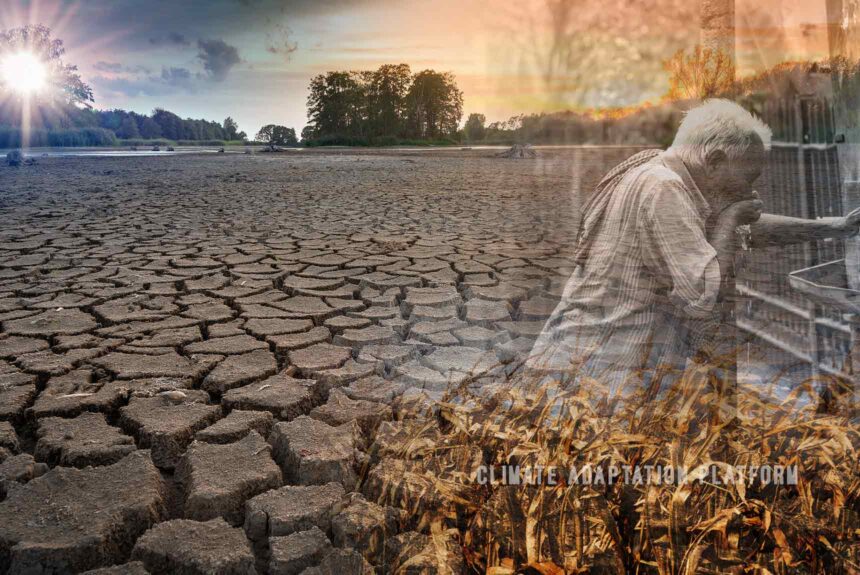The end of 2022 marks La Niña’s third event in a row, a rare occurrence but not unheard of. La Niña, relatively weak but unusually prolonged, began in 2020 and has returned for the third time, making this a rare “triple-dip” event. Other triple-dip La Niña’s recorded since 1950 spanned the years 1998-2001, 1973-1976, and 1954-1956 (La Niña Times, 2022).
La Niña is the cooling phase of the El Niño Southern Oscillation (ENSO), a cyclical weather pattern that influences temperature and rainfall globally. While El Niño is the opposite, bringing hotter temperatures due to the warming temperatures of the sea surface by at or above 0.5°C.
El Niño and La Niña can impact weather, wildfires, ecosystems, and economies worldwide. El Niño and La Niña events occur every two to seven years, on average, but they do not happen on a regular schedule. Episodes of El Niño and La Niña typically last nine to 12 months but can sometimes last for years. Generally, El Niño occurs more frequently than La Niña.
What is striking this year is although the world is under La Niña, a cool phase of the ENSO, new data shows that in 2022 the world experienced record-breaking or near-record temperatures every year in the last few years. So, if La Niña kept a lid on global temperatures, imagine how hot the Earth could get when it moves into the warm phase of El Niño.
Scientists warn that El Niño will return later in 2023 and will cause global temperatures to rise “off the chart” and deliver unprecedented heat waves. They predict that it is very likely that the world will exceed 1.5C of warming (Carrington, 2023).
This projection comes on the heels of satellite readings, confirmed by ships and buoys, showing a spike in sea-surface temperatures this year. The Economist reports that On April 1, average global sea-surface temperatures reached 21.1°C (70.0°F). The new record is over half a degree above the global average between 1982 and 2011.
Scientist attributes this anomalous heating of the Pacific Ocean waters to the El Niño phenomenon that usually comes after a long period of La Niña, which happened from 2020 to 2022. But the article notes that this year’s sea-surface temperatures have already started from a relatively higher point than the previous years because 2022 already registered hot ocean surface temperatures.
The double whammy of climate change and the effects of ENSO can be disastrous.
So how does climate change affect the ENSO? Records show that since the 1950s, El Niño and La Niña phases have strengthened, leading to significant changes in sea-surface temperatures.
In some regions, El Niño will bring heavy rain and La Niña drier conditions or droughts. Although the IPPC doesn’t have a consensus on the definitive effect of climate change on the ENSO, climate models agree that because of global warming, the ENSO’s impact on rainfall variability will increase over the east-central Tropical Pacific.
What to expect from the coming El Niño this 2023?
9 News reports that this could lead to droughts, heatwaves, and bushfires in Australia at the end of this year, a summer season. The El Niño that occurred in 2019 has brought severe droughts in the country, followed by one of the most dangerous bushfire seasons.
The Word Meteorological Organization has also released a warning on May 3 to brace for the upcoming El Niño, which has a 70% to 80% chance of occurring starting from June this year. South Asia countries can experience reduced rainfalls and severe droughts. While some regions experience drier conditions, it can cause increased rainfall in southern South America, the Horn of Africa and central Asia.
The Pacific region is home to a third of the world’s population. Because of the ENSO, people living here are experiencing a climate that varies from year to year, something that the rest of the world may not share. But with weather forecasts getting better and more accurate and able to predict these climate phenomena months earlier, people and governments could begin preparation ahead of time and place resources where it’s most needed.
Watch the video below to learn more about how El Niño and La Niña affect the world’s weather.
Source:
La Niña Times Three. (2022, November 29). Earth Observatory. Retrieved from https://earthobservatory.nasa.gov/images/150691/la-nina-times-three
El Niño and La Niña. (n.d.) UN OCHA. Retrieved from https://www.unocha.org/themes/el-ni%C3%B1o/el-ni%C3%B1o-and-la-ni%C3%B1a
Carrington, D. (2023, January 16). Warning of unprecedented heatwaves as El Niño set to return in 2023. The Guardian. Retrieved from https://www.theguardian.com/environment/2023/jan/16/return-of-el-nino-will-cause-off-the-chart-temperature-rise-climate-crisis
Ocean-surface temperatures are breaking records. (2023, May 5). The Economist. Retrieved from https://www.economist.com/graphic-detail/2023/05/05/ocean-surface-temperatures-are-breaking-records
How El Niño and La Niña affect the world’s weather. (2023, April 13). The Economist. Retrieved from https://www.economist.com/films/2023/04/13/how-el-nino-and-la-nina-affect-the-worlds-weather
Hohne, J. (2023 February 11). When will La Niña end and will we get an El Niño weather system this summer? 9News. Retrieved from https://www.9news.com.au/national/weather-forecast-australia-2023-la-nina-el-nino-explainer/40c4efbd-42cc-4426-8d75-bb6757aa455c
WMO Update: Prepare for El Niño. (2023, May 3). World Meteorological Organization. Retrieved from https://public.wmo.int/en/media/press-release/wmo-update-prepare-el-ni%C3%B1o
Cold & Warm Episodes by Season. (n.d.). Retrieved from https://origin.cpc.ncep.noaa.gov/products/analysis_monitoring/ensostuff/ONI_v5.php.



Leave a Reply